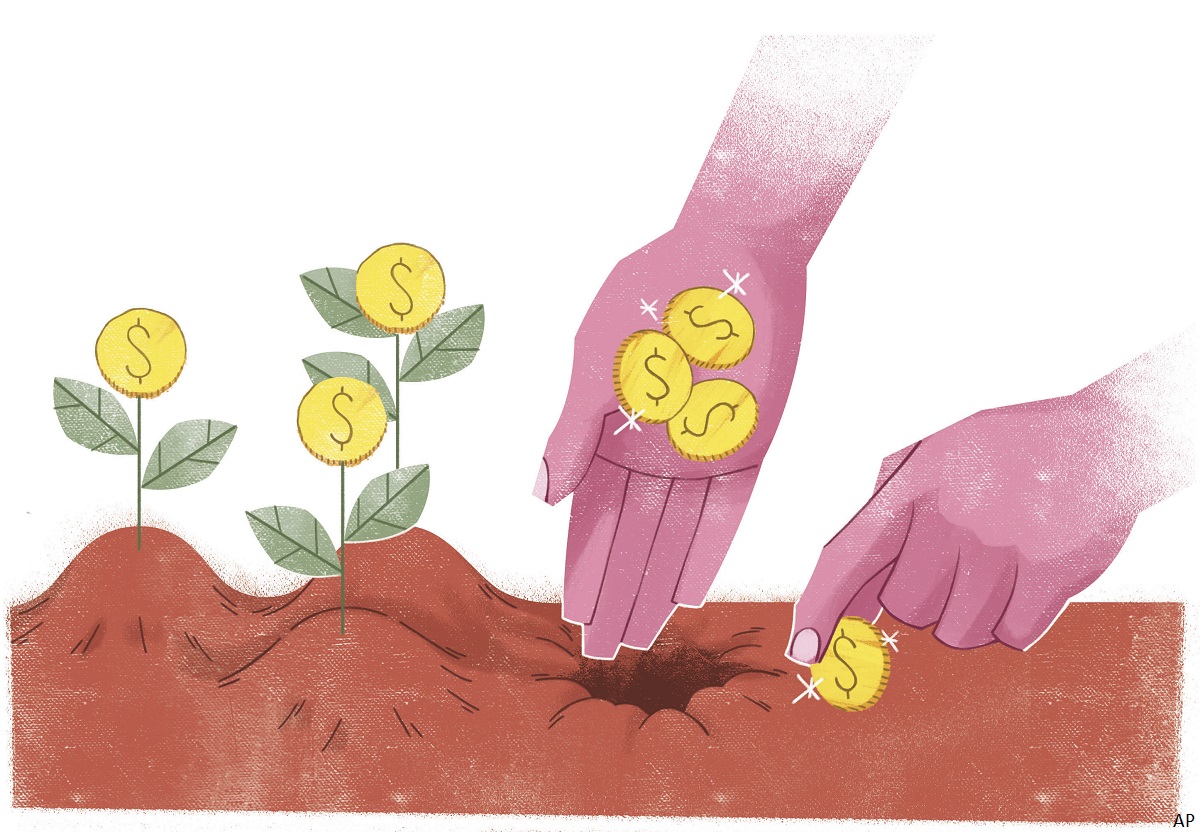:quality(80)/cloudfront-us-east-1.images.arcpublishing.com/morningstar/VIRI5WCXLJBHBDMWTZCH3P7QKY.png)
While exchange-traded funds have traditionally been the domain of index-tracking strategies, in recent years, more actively managed stock ETFs have come to market.
At the end of 2018, there were just 58 actively managed diversified U.S. stock ETFs, compared with 463 passively run funds. By the end of 2021, there were 175 active stock ETFs. Today there are 320. While that is still behind the 609 index-tracking ETFs, the gap has narrowed.
Actively managed stock ETFs add a new element to investor toolkits, bringing the potential for market outperformance without the higher fees that often accompany traditional open-end mutual funds. In addition, thanks to their structure, ETFs can offer better after-taxreturns than open-end funds.
7 Top-Performing Active ETFs
For this article, we screened for the top-performing active stock ETFs. Because of the limited number of funds with longer track records, we looked for funds across all nine of Morningstar’s diversified U.S. stock fund categories.
We first screened for ETFs in the top 25% of their categories using the lowest-cost share classes over the last 1-, 3-, and 5-year time frames. We excluded funds with less than $100 million in assets and those with no or minimal Morningstar analyst input on their Medalist Ratings.
From this screen, we’ve highlighted the seven active stock ETFs with the best year-to-date performances:
- EA Bridgeway Blue Chip BBLU
- WisdomTree US Value WTV
- Vanguard US Quality Factor VFQY
- JPMorgan Equity Focus JPEF
- JPMorgan Market Expansion Enhanced Equity JMEE
- Vanguard US Multifactor VFMF
- Cambrian Shareholder Yield SYLD
EA Bridgeway Blue Chip
- Morningstar Medalist rating: Silver
- Morningstar Rating: 5 stars
- Morningstar Category: Large Blend
- Fund Size: US$110 million
- Expense ratio: 0.15%
“This strategy leans toward larger, more value-oriented companies compared with its average peer. Analyzing additional factors, this strategy has consistently favored high-quality stocks, including those with low financial leverage and solid returns on equity, compared to its peers during recent years.
“The portfolio is overweight in communication services by 6.1 percentage points and financial services by 4.1 points relative to the category average. The sectors with low exposure compared to peers are industrials and basic materials, which are underweight compared to the average by 4.9 and 2.9 percentage points of assets, respectively.
“Portfolio management turnover has been minimal at the firm over the past five years. Long-term stability signals a strong investment culture. On average, the firm charges fees on its funds that are within the second-cheapest quintile of its category.”
—Morningstar Manager Research
WisdomTree US Value
- Morningstar Medalist rating: Neutral
- Morningstar Rating: 4 stars
- Morningstar Category: Large Value
- Fund Size: US$160 million
- Expense ratio: 0.15%
“This strategy has held more liquid stocks compared to its category peers over the past few years. More liquid assets are easier to buy and sell without adversely moving their prices, and they tend to provide ballast during market selloffs. They also are easier to sell to meet redemptions if a host of investors decide to leave the fund in a short period of time.
“Over the past five years, this fund’s shares have returned an average of 10.5% per year, putting it in the 6th percentile of the category. For the last three years, it has returned an average of 18.5% a year, landing it in the 7th percentile. And for the past 12 months, the fund lands in the 23rd percentile with a 7.23% gain.”
—Morningstar Manager Research
Vanguard US Quality Factor
- Morningstar Medalist rating: Silver
- Morningstar Rating: 4 stars
- Morningstar Category: Mid-Cap Blend
- Fund Size: US$220 million
- Expense ratio: 0.13%
“This strategy has seen its entire listed management team change within the past three years. Even though it dates back to February 2018, it’s difficult to analyze the new team until they spend more time on the strategy. The new team took the reins in July 2022, and they have posted admirable results so far.
“For the most recent one-year period, the strategy garnered a 13.5% return through Sept. 18 over its peers’ average of 7.1%, outperforming the Morningstar US Mid Cap Index’s 9.4% return.
—Morningstar Manager Research, Morningstar Data
JPMorgan Equity Focus
- Morningstar Medalist rating: Neutral
- Morningstar Rating: 5 stars
- Morningstar Category: Large Blend
- Fund Size: 0.5%
- Expense ratio: US$220 million
“Over the past five years, this fund’s shares have returned an average of 12.5% per year, putting it in the 3rd percentile of the category. For the last three years, the fund has returned an average of 11.8% a year, landing it in the 7th percentile. And for the past 12 months, the fund has been in the 13th percentile with a 22.9% gain.
“Manager Jonathan Simon applies a mild value style, preferring attractively priced quality stocks combined with some opportunistic positions. Managing director Tim Parton targets companies with quality franchises and strong market positions, and typically builds a high-growth portfolio. Each sleeve can hold only 10–20 stocks. The managers run their sleeves autonomously, but they have regular discussions about the overall portfolio and its exposures.”
—Adam Sabban, senior analyst
JPMorgan Market Expansion Enhanced Equity
- Morningstar Medalist rating: Neutral
- Morningstar Rating: 5 stars
- Morningstar Category: Small Blend
- Fund Size: US$810 million
- Expense ratio: 0.24%
“This strategy combines quantitative and fundamental elements to try to outperform the S&P 1000 Index. It’s sensible and repeatable, but not very distinctive. It starts with a quantitative model that screens the S&P 1000 for stocks displaying the best combination of value, quality, and momentum characteristics.
“As an enhanced-index strategy, this ETF closely resembles its S&P 1000 benchmark. Its market-cap and sector exposures are highly similar to those of the index. The strategy held 613 stocks as of October 2022. That was more than half of the index’s constituents, with the goal of minimizing tracking error. An ETF structure should lead to more tax-efficient returns, but given the strategy’s structure, investors should expect benchmark-like performance.”
—Anthony Thorn, analyst
Vanguard US Multifactor
- Morningstar Medalist rating: Silver
- Morningstar Rating: 4 stars
- Morningstar Category: Mid-Cap Blend
- Fund Size: US$160 million
- Expense ratio: 0.18%
“Even though this fund’s track record dates back to February 2018, there has recently been a high degree of turnover in the management team, resulting in a complete overhaul of personnel. The new team took the reins in July 2022 and has posted admirable results so far.
“For the most recent one-year period, the fund returned 11.4% through month’s end, topping its average peer’s 7.0% and outperforming the Morningstar US Mid Cap Index’s 9.4% return.”
—Morningstar Manager Research
Cambrian Shareholder Yield
- Morningstar Medalist rating: Neutral
- Morningstar Rating: 5 stars
- Morningstar Category: Mid-Cap Value
- Fund Size: US$800 million
- Expense ratio: 0.59%
“The strategy pulls in stocks of all sizes, but it concentrates in small- and mid-caps, causing it to fall into mid-cap value territory. However, its unique strategy translates into a portfolio that is distinct from the Russell Midcap Value Index. The fund allocated more than double the benchmark’s weight to three sectors as of May 2023: consumer cyclical, energy, and materials. Those sectors together claimed 52% of the portfolio, compared with the index’s 22%. It makes up for much of this difference by avoiding real estate, utilities, and communications stocks, to which the benchmark allocates 23% of its combined assets.
“The fund courts considerable active risk relative to the mid-cap value Morningstar Category index and peers. Its shareholder yield and value approach cause sector weights to frequently deviate from the benchmark. These differences have paid off recently, but may not continue to be a reliable performance advantage.”
—Zachary Evens, associate analyst













.png)








